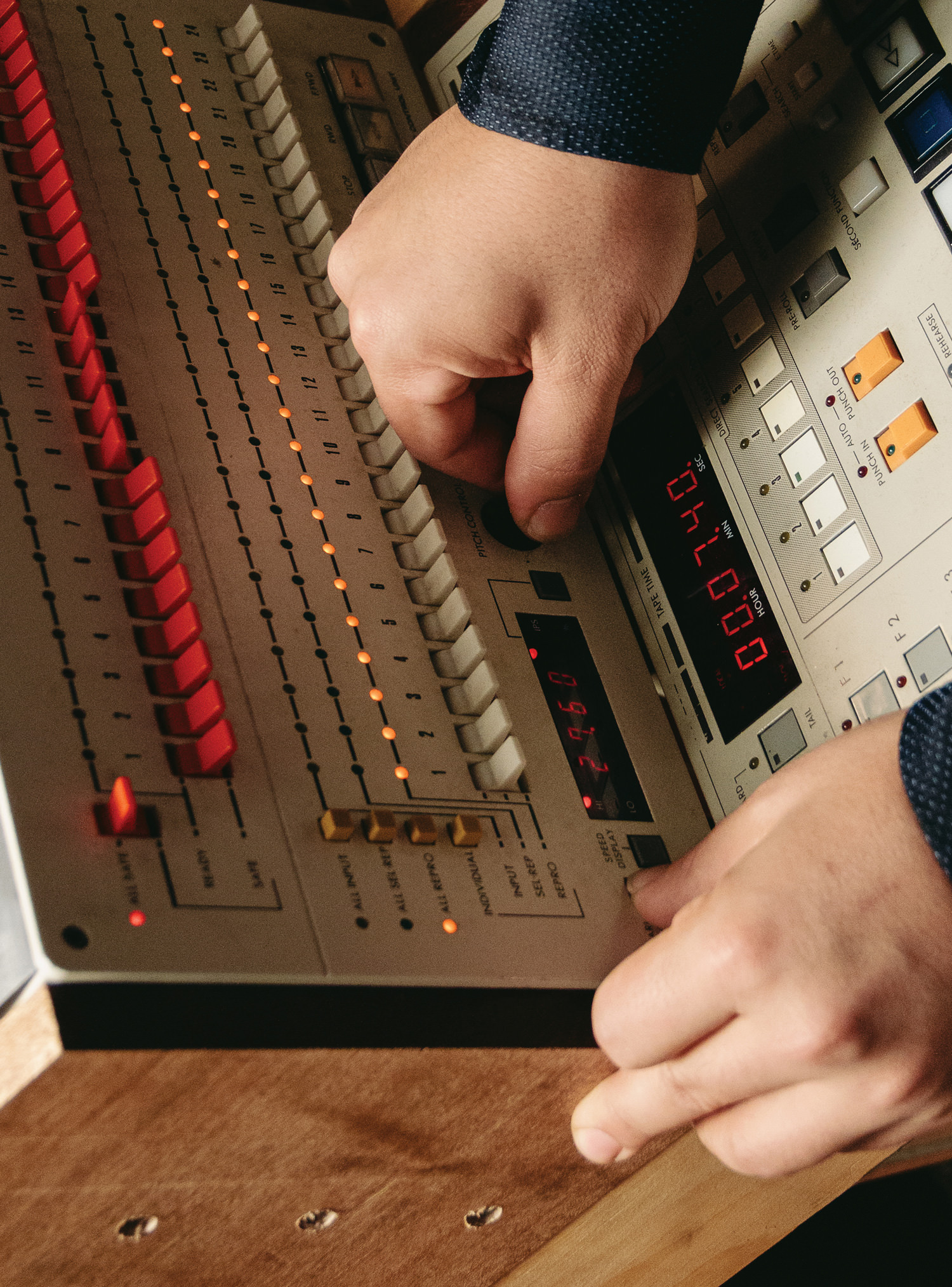Carl Tatz is an award-winning studio designer best known for his PhantomFocus System [Tape Op #82], a wholistic approach to optimizing all aspects of a monitoring system in order to achieve the best performance from the speakers, the room, and ultimately the engineer. To that end, his company, Carl Tatz Design, now offers a task chair that's been specifically conceived to handle the kinds of duties — both stationary and moving — that we as engineers must fulfill when we're sitting in front of our monitors.
As a chair geek, I rushed to check out the PhantomFocus eChair (with the leading e presumably standing for engineer) as soon as I finished watching the very informative video on CTD's ecommerce website, which features eChair designer Steve Knight demoing all of the chair's features. I've had my eChair for several months now, and although I still prefer my HÅG Capisco saddle chair [Tape Op #72] at my office desk, the eChair is what I sit on at my mixing console. "Sit" may not be a fair word to use in this context, because the eChair offers an incredibly active, not- quite-seated experience, which CTD calls ZenWave.
Let me start by explaining two patented features of the eChair that I've seen in no other chair. First, the ActiveTilt seat pan pivots (not slides) forward and backward on a set of elastomer columns. Second, the Free-Float backrest can be unlocked, so that hidden springs actively push the backrest into your lower back as you lean your body forward and backward. Think about these two functions for a second, and then try to envision yourself doing what you do when you're working at your mixing console. Yup, you're constantly alternating between leaning forward to make adjustments, and sitting upright to better hear the consequences of those adjustments. And other times, you're pushing with your legs and leaning your body sideways or even backwards to reach for gear in the racks. In all of these instances, the eChair follows your movements, agilely providing physical support and eagerly massaging your back at the same time — all the while earnestly promoting good posture.
Other features include a standard recline, which allows the seat pan, backrest, and arm rests to tilt backward together in unison, and a unique decline, which is a tilt-forward position you would use in conjunction with extended seat height to straighten your spine and transfer some of your weight to your leg muscles, a body position that reduces pressure on your lower-back. Big paddle levers below the seat pan assure easy operation of the aforementioned features, and the levers can be pulled for momentary adjustment from a locked state, or pushed down to allow freely unlocked variation. Additionally, the eChair doesn't skimp on any features that are expected on professional task chairs. Armrests have height, width, and yaw-angle settings; the height of its backrest can be changed; and its lever-activated pneumatic lift makes seat height adjustment easy.
The seat pan and backrest utilize an open, suspended weave of nylon fibers, much like the iconic and ubiquitous Aeron chair from Herman Miller. But that's where the similarity between the two task chairs ends. Unlike the Aeron, the eChair, with its ActiveTilt seat pan (and its higher-density foam at the front curve of the pan), doesn't cut off blood flow to my legs. And after a day spent working at a mixing console on an eChair, I feel refreshed and invigorated, without the cramps and pains that normally come with hours of sedentary posture in an Aeron. (I still have a few of the Aeron chairs I purchased years ago, at an auction of a failed startup operation that hadn't even gotten to unwrapping its newly acquired furniture before the first dotcom bubble burst.) To put it succinctly, sitting in an Aeron versus sitting in an eChair is a night and day difference. My back especially is thankful of the eChair, perhaps because the Free-Float backrest massages my back and "rehydrates the intervertebral discs, increasing the space between the vertebrae and taking pressure off the nerves that radiate out from the lower spine," as Steve Knight carefully explains in his CTD video. Or perhaps it's a combination of all the chair's motion-complementing features that discourages me from clenching my back muscles when trying to hold an extended body position at my console. Whatever the reason, the eChair is keeping me healthy, happy, and focused on making better recordings and mixes — which fits in perfectly with the PhantomFocus ethos.
If I could offer any ideas for future versions of the chair, I'd ask for some way to adjust the ActiveTilt elastomers to better match my lean build, greater tilt-forward decline angle to allow me to transfer more weight to my leg muscles, and optional casters with higher friction for use on hard floors. (Regarding the latter request, I ordered my HÅG chairs with higher-friction castors, and it's nice to know that these chairs won't roll into a rack of gear when inadvertently bumped.)
With that said, the eChair is an easy recommendation. Perhaps you're planning to buy yet another 500-series module that you'll use here and there, or you're scouring eBay or Reverb.com for a certain mic that you'll occasionally shoot out with all of the other mics in your cabinet. Why not instead consider the purchase of a PhantomFocus eChair? It's a product that will have a positive effect on everything that you do in your studio, day in and day out; and it probably costs less than the 500-series module or vintage mic that you're eyeing. It's certainly cheaper than an Aeron. By the way, the high build-quality of the eChair is reflective of the fact that it's manufactured by Crown Seating, a leader in ergonomic seating products across multiple industries.




_disp_horizontal_bw.jpg)